What is the Most Popular Hedge? Discover the Top Choices for Your Garden
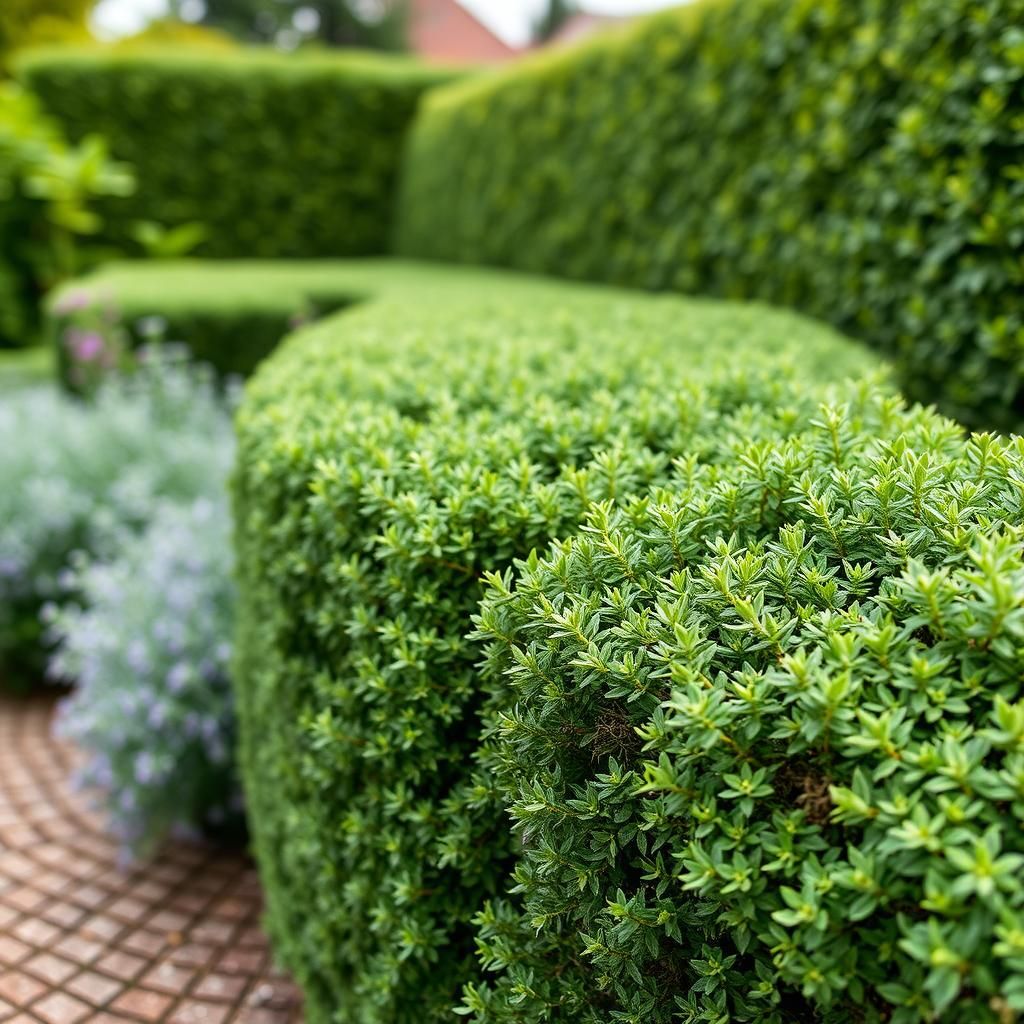
When it comes to enhancing your garden's aesthetics and providing natural privacy, selecting the right hedge is crucial. Hedges not only serve as beautiful borders but also play a significant role in creating cozy outdoor spaces. With a myriad of options available, finding the most popular hedges can help you make an informed choice that aligns with your garden's design and your personal tastes. In this article, we will explore the top choices for hedges, considering factors such as growth rates, maintenance requirements, and seasonal appeal to guide you in cultivating a thriving and visually appealing garden environment.
What is the Most Popular Hedge?
The most popular hedge in current markets often refers to diversifying investments to mitigate potential losses during uncertain economic periods. This strategy typically includes a mix of assets, such as stocks, bonds, and real estate, to help balance risks. Among the various options, many investors look to hedge funds, which are pooled investment funds that employ a range of strategies to maximize returns while minimizing risk. Popular hedging strategies can also include derivatives, such as options and futures contracts, which allow investors to protect themselves against price fluctuations in various assets.
Types of Hedges
There are several types of hedges that investors might employ to protect their portfolios. The most common types include financial derivatives, currency hedges, and commodity hedges. Each type serves the purpose of reducing risk associated with price fluctuations. Financial derivatives, like options and futures, allow investors to lock in prices and secure profit margins. Currency hedges help mitigate risks associated with foreign exchange fluctuations, while commodity hedges protect against price changes in raw materials. By diversifying these types of hedges, investors aim to create a more stable financial strategy.
Hedge Funds vs. Traditional Investments
Hedge funds differ significantly from traditional investments due to their flexibility and aggressive strategies employed by managers. Traditionally, investments are often more conservative, focusing on individual stocks or mutual funds. In contrast, hedge funds can invest in a variety of asset classes, utilize leverage, and explore short selling. These strategies often allow hedge funds to achieve higher returns but also come with increased risk. Understanding the difference between these investment vehicles is crucial for making informed decisions regarding hedging strategies.
Risks Associated with Hedging
While hedging is designed to minimize risk, it can also introduce additional complexities and potential for losses if not managed carefully. Some risks include the possibility of over-hedging, which can lead to lost profits if the market moves favorably. Furthermore, the instruments used for hedging, such as options and futures, can be difficult to understand for many investors, leading to miscalculations. Investors need to be aware of these risks and consider their overall investment strategy when incorporating hedging tools.
Popular Hedging Instruments
Key hedging instruments include options, futures, and ETFs (Exchange-Traded Funds), among others. Options give the right, but not the obligation, to buy or sell an asset at a predetermined price, offering a flexible hedging strategy. Futures contracts require the buyer to purchase, and the seller to sell, an asset at a predetermined future date and price, helping to lock in costs. ETFs can serve as a hedge by providing a diversified investment across various sectors without needing to purchase individual stocks. Each of these instruments plays a critical role in establishing a robust hedging strategy.
The Importance of Asset Allocation in Hedging
Asset allocation plays a crucial role in creating an effective hedging strategy. By distributing investments across various asset categories, such as equities, fixed income, and alternative investments, investors aim to reduce overall volatility. A well-structured asset allocation not only mitigates risk but also enhances the potential for returns. Investors must periodically review and adjust their asset allocation in response to market changes and personal financial goals to maintain an effective hedging approach.
| Hedging Instrument | Description | Potential Risks |
|---|---|---|
| Options | Right to buy/sell at a predetermined price | Complex understanding and miscalculation |
| Futures | Agreement to buy/sell an asset at a future date | Obligation to buy/sell may lead to losses |
| ETFs | Funds that track indices or sectors | Market fluctuations impacting the entire fund |
| Hedge Funds | Pooled investments with diverse strategies | Higher fees and less transparency |
| Derivatives | Financial instruments derived from other assets | Potential for significant financial loss |
What is the most popular hedge plant?
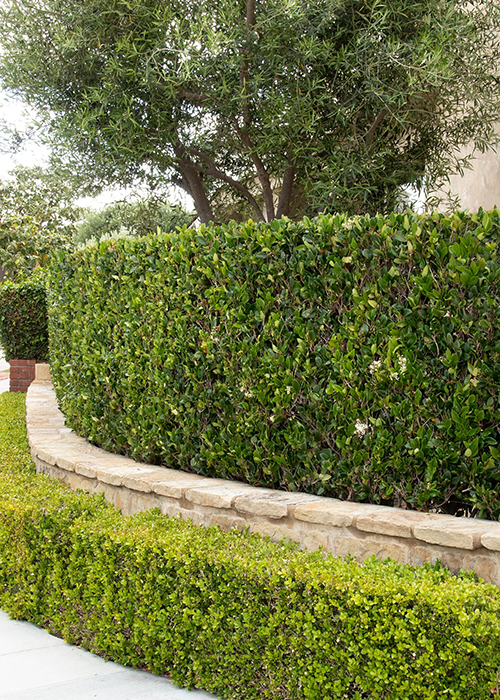
The most popular hedge plant is Boxwood (Buxus spp.). Boxwood has been favored for centuries due to its dense foliage, versatility, and ability to be shaped into formal hedges. It serves not only as a decorative element in gardens but also as an effective privacy screen, noise barrier, or windbreak. Boxwood is evergreen, which means it retains its leaves year-round, providing consistent beauty and structure in landscapes.
Characteristics of Boxwood
Boxwood plants are known for their dense, small leaves and significant adaptability to various garden conditions.
- Growth Habit: Boxwoods can vary in size, growing as small shrubs or large hedges, depending on the species.
- Dense Foliage: Their compact growth makes them perfect for creating formal hedges that provide privacy.
- Evergreen Nature: Unlike deciduous plants, boxwoods keep their green foliage throughout the year.
Ideal Growing Conditions
While boxwoods are resilient, they thrive best under specific conditions that can enhance their growth and health.
- Soil Type: Well-drained, fertile soil enriches boxwoods and prevents root rot.
- Lighting: They prefer partial shade to full sun, providing flexibility for various garden settings.
- Watering: Regular watering is essential, especially in the first few years after planting.
Common Varieties of Boxwood
There are several varieties of boxwood, each offering unique characteristics that make them suitable for different aesthetic preferences.
- English Boxwood: Known for its small leaves and dense growth, ideal for low hedges.
- Korean Boxwood: This variety is more tolerant of extreme cold and has a slower growth rate.
- Japanese Boxwood: It has a more rounded shape, thriving in various environments.
Maintenance Tips for Boxwood Hedges
Proper maintenance is crucial to keeping boxwood hedges healthy and visually appealing throughout the year.
See also: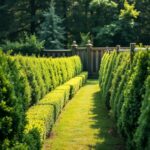
- Pruning: Regular pruning helps maintain shape and promotes fuller growth.
- Pest Management: Watch for pests like boxwood mites or scale, which can harm foliage.
- Fertilization: Applying a balanced fertilizer in spring supports robust growth and health.
Uses in Landscaping
Boxwood is often used in various landscaping applications due to its aesthetic and practical benefits.
- Formal Hedges: Commonly used to create defined boundaries in gardens and estates.
- Topiary Art: Boxwoods can be shaped into intricate designs for artistic landscaping.
- Foundation Planting: They serve well as foundational plants around homes, enhancing curb appeal.
What's the easiest hedge to maintain?

The easiest hedge to maintain is often considered to be the Taxus baccata, commonly known as the English Yew. This evergreen shrub is favored for its adaptability, slow growth rate, and capability to thrive in various soil types and climates, making it relatively low-maintenance compared to other hedging options.
Characteristics of the English Yew
The English Yew possesses several characteristics that contribute to its easy maintenance:
- Evergreen Foliage: Retains its leaves throughout the year, providing consistent structure.
- Slow Growth Rate: Requires pruning less frequently than faster-growing species.
- Shade Tolerance: Grows well in partial to full shade, reducing the need for specific planting conditions.
Watering Needs
One of the benefits of the English Yew is its low watering needs. The deep root system allows the plant to access moisture more effectively, making it drought-resistant once established.
- Adequate Drainage: Prefers well-drained soil, which helps prevent root rot.
- Minimal Watering: Requires watering primarily during extreme dry spells.
- Mulching: Applying mulch around the base can help retain soil moisture.
Pruning Considerations
Pruning the English Yew is straightforward, contributing to its reputation as an easy-to-maintain hedge.
- Timing: Ideal for pruning in late winter or early spring before new growth.
- Technique: Light trimming is sufficient to maintain shape without affecting its overall health.
- Minimal Upkeep: Occasional trimming is all that’s needed to keep the hedge looking tidy.
Pest and Disease Resistance
The English Yew is known for its robust resistance to pests and diseases, which simplifies maintenance.
- Few Pests: Generally not prone to infestations, reducing the need for pest control.
- Disease Resistance: Rarely affected by major diseases, so less risk of damage.
- Natural Hardiness: Able to withstand a variety of environmental conditions.
Overall Aesthetic Appeal
In addition to its practical maintenance benefits, the English Yew offers strong aesthetic qualities.
- Dense Growth: Creates a lush, full appearance, ideal for privacy screening.
- Year-Round Color: Maintains greenery through all seasons, enhancing landscape appeal.
- Versatile Shape: Can be clipped into formal shapes or allowed to grow naturally.
What's the fastest growing hedge?
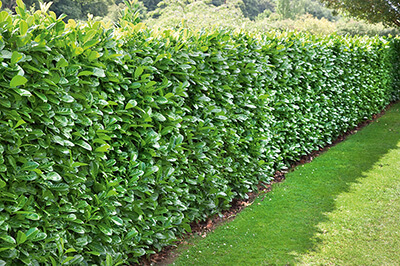
The fastest growing hedge is often considered to be the Leyland Cypress (Cupressocyparis leylandii). This versatile evergreen can grow up to 3-4 feet per year under optimal conditions, making it an excellent choice for establishing a quick privacy screen or windbreak. Leyland Cypress is favored for its dense foliage and adaptability to various soil types and environmental conditions.
What Makes Leyland Cypress a Fast Growing Hedge?
The rapid growth rate of Leyland Cypress can be attributed to several key factors, including its biological characteristics and ideal growth conditions:
- Genetics: The Leyland Cypress is a hybrid species, which gives it a unique growth advantage over many other shrubs.
- Soil adaptability: It thrives in various soil types, including clay, loam, and sandy soils.
- Climate tolerance: Performs well in a range of climates, from temperate to subtropical.
Maintenance Requirements for Leyland Cypress
While the Leyland Cypress is a fast-growing hedge, it does require some maintenance to ensure optimal health and growth:
- Watering: Regular watering is essential, especially during dry spells, to promote healthy growth.
- Pruning: Periodic pruning helps maintain a neat appearance and control height.
- Pest control: Monitoring for pests, such as spider mites and bagworms, is necessary to prevent infestations.
Ideal Planting Conditions for Leyland Cypress
To maximize the growth potential of Leyland Cypress, specific planting conditions should be considered:
See also: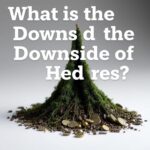
- Sunlight: Full sun (at least 6-8 hours of direct sunlight daily) is optimal for robust growth.
- Spacing: Adequate spacing (typically 5-10 feet apart) allows for air circulation and prevents disease.
- Soil drainage: Well-draining soil helps to prevent root rot and ensure healthy development.
Common Uses for Leyland Cypress Hedges
Due to its rapid growth and dense foliage, the Leyland Cypress is commonly used in various landscaping applications:
- Privacy screens: Ideal for creating a natural barrier between properties.
- Windbreaks: Effective at reducing wind speed in exposed areas.
- Aesthetic value: Can enhance the visual appeal of gardens and outdoor spaces.
Alternatives to Leyland Cypress
While Leyland Cypress is a popular choice, there are alternative fast-growing hedges worth considering:
- Privet: A traditional hedge known for its rapid growth but may require more maintenance.
- Boxwood: Slower than Leyland but flexible in design and well-suited for formal hedges.
- Eastern Red Cedar: Another fast-growing option that offers wildlife benefits and a rustic appearance.
What is the best hedge to block neighbors?

The best hedge to block neighbors often depends on factors such as your location, climate, and personal preferences. However, several hedges are commonly recommended for their density, growth rate, and overall effectiveness in creating barriers. One of the top contenders for a privacy hedge is the Arborvitae, a popular evergreen choice. Below are some insights into suitable hedges along with specific characteristics and recommendations.
1. Arborvitae
Arborvitae, particularly the Green Giant variety, is an excellent choice for creating a sound barrier and visual privacy between properties. These trees can grow up to 3-5 feet per year and can reach heights of up to 60 feet, making them great for tall, dense privacy screens.
- Fast Growth: Considered one of the fastest-growing hedge options.
- Dense Foliage: Provides excellent coverage all year round.
- Low Maintenance: Typically requires minimal pruning and care.
2. Leyland Cypress
Another popular option is the Leyland Cypress, known for its ability to grow rapidly and form a tall, lush barrier. This tree can reach heights between 60-70 feet and grows approximately 3-4 feet per year.
- Height: Grows very tall, creating more privacy.
- Adaptability: Thrives in various soil types and conditions.
- Neat Appearance: Maintains a tidy look with minimal upkeep.
3. Boxwood
For those looking for a more structured hedge, Boxwood is an excellent option. While it grows slower than the previous two, it can be trimmed into various shapes and is perfect for formal gardens.
- Evergreen: Keeps its foliage throughout the year.
- Versatile Shape: Can be pruned into geometric shapes or left natural.
- Rich Color: Offers a deep green color, enhancing garden aesthetics.
4. Privet
Privet is often used for its dense growth and ability to quickly form a thick hedge. It is semi-evergreen and can be pruned to maintain desired heights.
- Quick Privacy: Fast-growing, ideal for immediate coverage.
- Dense Growth: Forms a thick hedge that provides excellent screening.
- Adaptability: Thrives in various climates and soil types.
5. Bamboo
If you prefer a more exotic look, Bamboo can serve as a very effective privacy hedge. Certain non-invasive varieties can grow up to 35 feet tall and form a thick barrier.
- Fast Growth: Some species can reach full height within a year.
- Unique Aesthetic: Adds a distinct Asian-inspired look to your garden.
- Dense Coverage: Provides excellent privacy and sound insulation.
Questions from Our Readers
What is the most popular hedge?
The most popular hedge varies by region and investment strategy, but in general, equity market hedges using instruments like options and futures are commonly favored. These hedges aim to protect against market volatility and can provide investors with a buffer during economic downturns.
How do hedges work in investment strategies?
Hedges work by using financial instruments to offset potential losses in an investment portfolio. For example, an investor might purchase put options to hedge against a decline in stock prices, ensuring that even if losses occur, the impact is minimized.
Are there different types of hedges?
Yes, there are several types of hedges, including financial hedges like derivatives (options, futures) and physical hedges involving actual assets like real estate or commodities. Each type serves to reduce risk associated with price fluctuations in markets.
Is hedging suitable for all investors?
Hedging is not suitable for all investors due to its complexity and potential costs. It is mostly recommended for those willing to actively manage their investments and understand the associated risks. For some investors, simpler strategies may be more appropriate, focusing on long-term gains rather than short-term protections.
See also: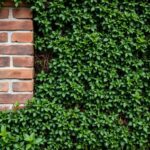

If you want to read more articles like What is the Most Popular Hedge? Discover the Top Choices for Your Garden, we recommend you check out our Hedges category.
Leave a Reply
Related Articles